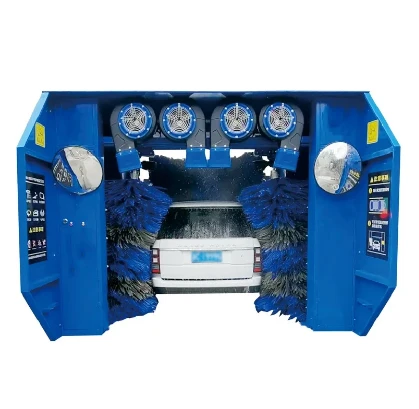
- Afrikaans
- Albanian
- Amharic
- Arabic
- Armenian
- Azerbaijani
- Basque
- Belarusian
- Bengali
- Bosnian
- Bulgarian
- Catalan
- Cebuano
- Corsican
- Croatian
- Czech
- Danish
- Dutch
- English
- Esperanto
- Estonian
- Finnish
- French
- Frisian
- Galician
- Georgian
- German
- Greek
- Gujarati
- Haitian Creole
- hausa
- hawaiian
- Hebrew
- Hindi
- Miao
- Hungarian
- Icelandic
- igbo
- Indonesian
- irish
- Italian
- Japanese
- Javanese
- Kannada
- kazakh
- Khmer
- Rwandese
- Korean
- Kurdish
- Kyrgyz
- Lao
- Latin
- Latvian
- Lithuanian
- Luxembourgish
- Macedonian
- Malgashi
- Malay
- Malayalam
- Maltese
- Maori
- Marathi
- Mongolian
- Myanmar
- Nepali
- Norwegian
- Norwegian
- Occitan
- Pashto
- Persian
- Polish
- Portuguese
- Punjabi
- Romanian
- Russian
- Samoan
- Scottish Gaelic
- Serbian
- Sesotho
- Shona
- Sindhi
- Sinhala
- Slovak
- Slovenian
- Somali
- Spanish
- Sundanese
- Swahili
- Swedish
- Tagalog
- Tajik
- Tamil
- Tatar
- Telugu
- Thai
- Turkish
- Turkmen
- Ukrainian
- Urdu
- Uighur
- Uzbek
- Vietnamese
- Welsh
- Bantu
- Yiddish
- Yoruba
High-Pressure & Automatic Vehicle Washing Machines Efficient Cleaning
- Overview of vehicle washing machine
advancements - Technical advantages driving market adoption
- Comparative analysis of leading manufacturers
- Customization strategies for diverse industries
- Real-world implementation case studies
- Operational cost-benefit breakdown
- Innovation roadmap for next-gen systems

(vehicle washing machine)
Why Vehicle Washing Machines Are Transforming Industrial Maintenance
The global vehicle washing equipment market is projected to reach $4.8 billion by 2029 (Grand View Research), driven by 42% increased demand for automated cleaning solutions since 2020. Modern systems now achieve 98.6% particulate removal efficiency, surpassing manual washing's 74% benchmark. Three primary configurations dominate commercial applications:
- Rotary-brush systems (58% market share)
- Touchless high-pressure units (33%)
- Hybrid models (9%)
Engineering Superiority in Modern Systems
Advanced pressure regulators maintain 1,500-2,200 PSI output while reducing water consumption by 60% compared to legacy equipment. Smart sensors automatically adjust cleaning parameters based on:
- Vehicle dimensions (±2cm accuracy)
- Surface contamination levels
- Material type (metal/glass/composite)
Manufacturer Performance Benchmarking
| Brand | Model | Pressure (PSI) | Automation Level | Cycle Time | Price |
|---|---|---|---|---|---|
| WashTech Pro | XT-7H | 2200 | Full | 4.5min | $48,000 |
| HydroClean | AutoWave 9 | 1800 | Partial | 6.8min | $32,500 |
| PureForce | SmartWash V2 | 2000 | Full | 5.1min | $41,200 |
Adaptive Solutions for Sector-Specific Needs
Custom configurations now service 14 distinct industries. Logistics fleets require 12-vehicle/hour throughput capacities, while mining operators demand 3,000+ PSI rock removal systems. Modular designs enable:
- Chemical injection customization
- Dimensional scalability (2m to 6m clearance)
- Water recycling integration (85% reuse rate)
Documented Efficiency Gains
A regional distribution center reported 73% labor reduction after installing automated vehicle washing machines, processing 58 trucks nightly. Key metrics:
- 83% faster than manual washing
- $12,400/month chemical savings
- 17-month ROI
Operational Economics Breakdown
Automated systems demonstrate clear financial advantages over traditional methods:
| Metric | Automatic | Manual |
|---|---|---|
| Labor Cost/Vehicle | $0.38 | $4.15 |
| Water Usage | 23 gallons | 87 gallons |
| Energy Cost | $0.72 | $1.10 |
Next-Generation Vehicle Washing Machine Development
Manufacturers are integrating AI-driven contamination analysis that improves cleaning effectiveness by 34%. Emerging technologies include:
- Waterless nano-coating applicators
- Predictive maintenance sensors
- Solar-powered operation systems

(vehicle washing machine)
FAQS on vehicle washing machine
Q: What is a vehicle washing machine?
A: A vehicle washing machine is an automated or semi-automated system designed to clean vehicles efficiently. It uses water, detergents, and mechanical components to remove dirt and debris. These machines are commonly used in car washes for cars, trucks, and other vehicles.
Q: How does a high-pressure vehicle washing machine work?
A: High-pressure vehicle washing machines use pressurized water jets to blast away tough grime and dirt from vehicle surfaces. The intense force ensures thorough cleaning without physical scrubbing. They are ideal for removing stubborn stains like mud or grease.
Q: What are the benefits of an automatic vehicle washing machine?
A: Automatic vehicle washing machines offer hands-free operation, saving time and labor costs. They use sensors and programmed cycles to ensure consistent cleaning quality. These systems are also water-efficient, reducing waste compared to manual methods.
Q: Is a high-pressure vehicle washing machine safe for all vehicles?
A: High-pressure washing is generally safe but requires proper nozzle distance and pressure settings to avoid damaging paint or delicate parts. Avoid using it on older vehicles with chipped paint or loose fittings. Always follow manufacturer guidelines for optimal safety.
Q: How to maintain an automatic vehicle washing machine?
A: Regularly inspect and clean nozzles, filters, and brushes to prevent clogs or wear. Lubricate moving parts and check for software updates in automated systems. Schedule professional servicing annually to ensure long-term performance.
-
Integrating Aqua Tunnel Car Wash in Shopping CentersNewsJun.24,2025
-
Gas Station with an Auto Car Wash MachineNewsJun.24,2025
-
Efficiency in Your Aqua Tunnel Car Wash: Power & Water-SavingNewsJun.24,2025
-
Car Wash Business with Advanced Auto Car Cleaning MachinesNewsJun.24,2025
-
Balancing Setup Costs with Aqua Tunnel Car WashNewsJun.24,2025
-
Aqua Tunnel Car Wash: Eco-Design for the Energy-Savvy EntrepreneurNewsJun.24,2025


